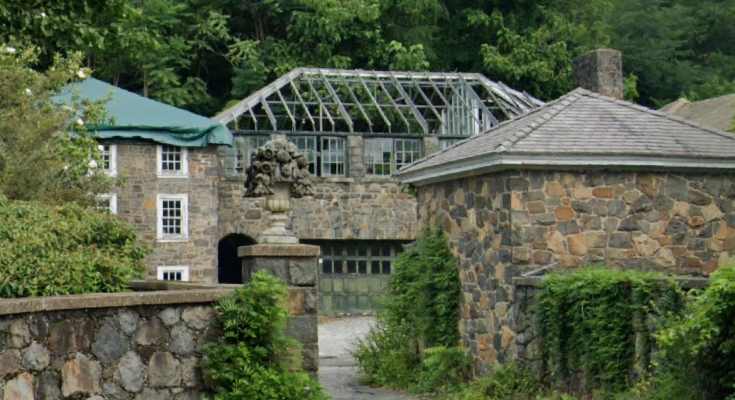Wilmington Mayor Mike Purzycki said today he is committed to the preservation and beautification of the six-acre, historic Gibraltar property on the western edge of the City. The Mayor said the goal of this effort is to make the property available for the enjoyment of the public for generations to come. Gibraltar is one of the most significant properties in Wilmington and notably is listed on the National Register of Historic Places, a nationwide list of historic properties that the U.S. government says are worth protecting and preserving. Mayor Purzycki said his ongoing interests in preserving Gibraltar match those of former Mayor James Baker who, as a chronicler of local history, also believed that the deteriorating property at 2505 Pennsylvania Avenue, should be preserved.
“For too long, well-intended neighbors and other interested parties have not been able to see eye-to-eye on what to do with this property, but everyone seems to agree on one thing—Gibraltar should not be allowed to further deteriorate,” said Mayor Purzycki. “City residents should understand that after decades of neglect we are at a crossroads when it comes to Gibraltar. Either we commit to preserving it or it will inexorably rot beyond salvation. So, consistent with our treatment and protection of other public places across the city my administration is committed to seeing that this magnificent 19th century country estate is fully restored so that it can be enjoyed by future generations of City residents and visitors. My home is next door to Gibraltar, so I have watched it’s decline for years. Some have suggested a personal conflict of interest. There is none. Much as I’ve done throughout my career on the Christina Riverfront and as Mayor in preserving neighborhoods, this is about giving new beauty and purpose to part of our City and its history.”
The Mayor announced that he recently negotiated the purchase of the property for $900,000, an amount he described as a bargain, and the transfer of a City street bed (which will require City Council approval) to the former owners of the estate, Gibraltar Preservation Group, LLC. To facilitate development and improvements, the property was transferred to the Wilmington Neighborhood Conservancy Landbank with which the City will work to give the property new life and meaning. The funding for the purchase was provided by the Delaware General Assembly after the Mayor traveled to Dover to present the importance of saving Gibraltar. The Mayor said he truly appreciates the State Legislature’s support for preserving this historic property.
Mayor Purzycki said there are no definitive plans at this time for the property. And while he has thoughts about how the property might ultimately be used, the Mayor said there will be time to explore these ideas with Council Members, neighbors, and other interested parties. Prior to settlement, the City by agreement was permitted access to the property for the purpose of improving the grounds, trimming trees and overgrown vegetation, and making physical improvements to the mansion and outbuildings. The City has spent $250,146 to date on improvements to the property. Before and after photos of this work can be viewed here.
History of Gibraltar (Wikipedia)
The estate was developed around 1844 by John Rodney Brincklé, grandnephew of the first Governor of Delaware, Caesar Rodney. It is located in the western part of Wilmington just within the city limits and was named for its position on a high rocky outcrop overlooking the city, in an allusion to the Rock of Gibraltar. The Rock of Gibraltar is a monolithic limestone promontory located in the British territory of Gibraltar, near the southwestern tip of Europe on the Iberian Peninsula, and near the entrance to the Mediterranean.
Brincklé was said to have built it in an unsuccessful attempt to woo a woman from Philadelphia and subsequently used it as a retreat and as a base where he could conduct horticultural experiments as well as entertain friends and relatives. The estate originally extended over an area of about 80 acres. Around 1848 he invited his brother Samuel with his wife and their eight children to move into the house. Samuel purchased it in May 1862 and carried out planting and landscaping works on the property. The estate passed to his wife Julia on his death and subsequently to their children. It was purchased in 1909 by Hugh Rodney Sharp and his wife, Isabella Mathieu du Pont Sharp, a member of the Du Pont family. In 1915 it was renovated under the direction of Philadelphia architects DeArmond, Ashmead and Bickley. The house’s interior decor includes Colonial Revival and Italianate architecture and contains works by Albert Ely Ives and others. Between 1916 and 1923, the pioneering female landscape architect Marian Cruger Coffin laid out the gardens.
Sharp died in 1968 and the estate was inherited by his son, Hugh Rodney Sharp Jr., who did not share his father’s interest in horticulture. By the time he died in 1990 the gardens had not been maintained for many years and were badly overgrown. The estate was put up for sale after his death and was saved from demolition after a campaign by local people and Preservation Delaware. The Delaware Open Space Council bought the development rights to the property and the Sharp family donated the estate to Preservation Delaware. In 1998 the estate was listed on the National Register of Historic Places. The listing included works of art, a house, a horticultural facility, secondary structures, and street furniture/objects. The gardens were opened to the public in 1999.
Source: Mayor’s Office

